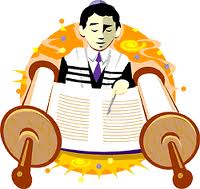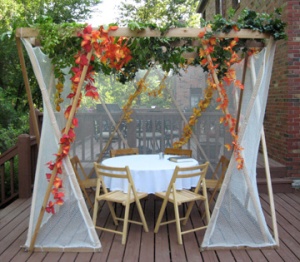Have you ever wanted to fast forward or rewind parts of your life like you can on your VCR or DVR? Ever wanted a button to erase something you said or did, or skip past particularly unpleasant moments of life? Sometimes, it seems like we’d be better off if we could do that. And sometimes it’s all in the way you look at things. For instance, the letters N-O-W-H-E-R-E can either be read as NOWHERE or NOW HERE.
In the movie “Click”, that came out a few years back, Adam Sandler plays a young husband and father struggling to climb the corporate ladder, to make things better for his wife and his family. In the opening scenes, he shows up late to his son’s swim meet and in his hurry, mistakenly hoists a boy that he thinks is his son out of the water to congratulate him on his lap, only to miss his son’s event. His boss threatens to give a promising account to another employee unless Sandler cancels his family’s fourth of July weekend camping trip. And during family dinners he is reluctantly bodily present but mentally absent, his mind continually on work and tethered to the office by the cell phone in his ear. Hoping to pull off the project that will guarantee his financial success and make him partner in the firm, Sandler prepares to pull an all-nighter to create an architectural model, but first he must watch a video on Japanese architecture. Late that night, when the TV remote control doesn’t work an exhausted, sick, and fed up Sandler heads out to find a universal remote and winds up at the only store that is open – a Bed, Bath and Beyond. There in the aisles past bath and bedding, he has a spiritual moment. Noticing a door marked “beyond”, Sandler enters and meets a mysterious man with a remote control that allows Sandler to freeze and fast forward life events seemingly at will. Soon, when the going gets tough, he is clicking away. But to his great sorrow, Sandler soon finds that he has clicked away the most important and meaningful moments of his life; that he was not present in the moment, but rather on auto-pilot, and he cannot get those moments back. Rather than being NOW HERE, he has discovered that he is NOWHERE.
As I struggle to find the words to say this Yamim Noraim, my kindergartener comes over to my desk as she often does and insistently tries to gain my attention. “Play dollies with me Mommy,” she says over and over again. “Not now, honey, Mommy has to work on writing sermons.” “Then will you play dollies with me?” “Maybe, in a little while I can play. Go see if Daddy can play with you now.” After what she thinks is a little while – maybe 5 minutes, maybe 15 she comes back. “Mommy, now can you play dollies with me?” I hesitate for a moment – if only because Barbies is not my favorite game – I always preferred playing with baby dolls or stuffed animals. And I remember when her brothers wanted to play – trains, legos, with their dolls (action figures). They don’t want to do that anymore. And they are old enough to know not to bother me when I’m writing. I sigh. Recently people have asked me how this school year is going, is everyone doing well, isn’t it wonderful that they are all gone all day, aren’t you relieved to have them back in school. And the truth is, no, I’m not really so relieved. I miss them. Since she’s now back in school, I already miss my daughter crawling onto my lap, still sleepy, when early on Friday mornings I am studying Talmud over Skype with my chevruta partner. During the school year life is so busy and I am so busy that we don’t get to enjoy each other because we are so busy rushing to places that we need to be, and things that we need to do. So when I can, I force myself to remember how quickly time passes. Soon enough they will be rushing out the door to be with friends in the evenings as well as after school, they will go off to college, and G-d willing will make a good life for themselves and not move back into our home (oy!), they will be young adults leading their own lives, following their paths, creating their own families.
The High Holydays are a time for reflection, a time for prayer, and a time for being present. This time of year is a wake up call to us to get up from our sleep, and return to our souls, to remember what is most precious, and stop living our days on auto-pilot.
And so I embrace the now and try for a moment not to worry about anything but being in the present moment.
Rabbi Audrey S. Pollack
Rabbi Audrey S. Pollack is the rabbi of Temple Israel in West Lafayette, Indiana. She is the Midwest Regional Representative of the Women’s Rabbinic Network, a founding member of the Indiana Voices of Women leadership and spirituality group, and a writer of feminist midrash who enjoys singing and playing guitar.







